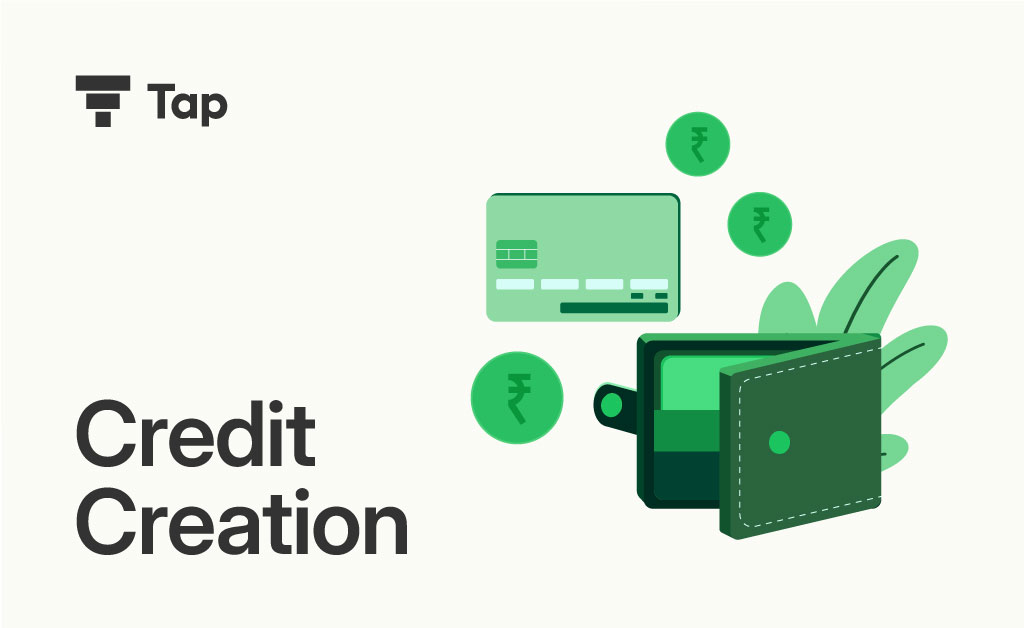The Engine of Modern Economies: Understanding Credit Creation

Overview:
In today’s world, credit plays a fundamental role in driving economic activity. But how exactly is credit created? This article dives into the concept of credit creation, focusing on the process employed by commercial banks. We’ll explore what it means, how it works, and the limitations that keep it in check.
What is Credit Creation?
Credit creation, in essence, is the expansion of the money supply within an economy. It happens when commercial banks extend loans and advances to their customers. While banks don’t physically create new cash, they essentially create new credit by recording these loans as deposits in the borrower’s account. This allows borrowers to spend the money, effectively increasing the money circulating in the economy.
Credit Creation by Commercial Banks: The Process
Here’s a breakdown of how credit creation unfolds in a commercial bank:
- Deposits: Customers deposit their money into the bank, creating a pool of funds.
- Loan Applications: Individuals or businesses approach the bank seeking loans.
- Loan Approval: Based on creditworthiness, the bank approves loans up to a certain multiple of their deposits (known as the Loan-to-Deposit Ratio).
- Crediting Accounts: The bank doesn’t physically transfer existing deposits. Instead, it creates a new deposit for the borrower, essentially expanding the money supply.
- Loan Utilization: Borrowers spend the loaned funds, stimulating the economy.
- Loan Repayment: Borrowers repay the loan principal and interest over time. This doesn’t destroy money; it simply reduces the outstanding credit and frees up the bank’s lending capacity.
It’s important to understand that banks don’t lend out all their deposits. They are required to maintain a certain reserve ratio, meaning a portion of deposits must be kept in reserve to meet customer withdrawals and ensure liquidity.
Limitations of Credit Creation
While credit creation fuels economic growth, it’s not without limitations:
- Reserve Requirements: As mentioned earlier, banks can’t lend out all their deposits. This limits the overall credit creation potential.
- Capital Adequacy Ratio: Regulatory bodies impose capital adequacy ratios to ensure banks maintain sufficient capital reserves to absorb potential losses. This can also constrain credit creation.
- Demand for Loans: If businesses and individuals are hesitant to borrow due to economic uncertainty or high-interest rates, credit creation will be limited.
- Inflation: Excessive credit creation can lead to inflation if the growth in the money supply outpaces the production of goods and services.
FAQs on Credit Creation
- Can the government influence credit creation? Yes, the government can influence credit creation through monetary policy tools like setting reserve requirements and influencing interest rates.
- What are the risks of excessive credit creation? Excessive credit creation can lead to asset bubbles, financial instability, and inflation.
- Are there alternatives to credit creation by commercial banks? Yes, central banks can also create money through quantitative easing, but this is a more direct and controlled approach typically used in times of economic crisis.
Conclusion
Credit creation by commercial banks is a cornerstone of modern economies. It fuels economic activity by expanding the money supply and providing access to credit for businesses and individuals. However, it’s crucial to understand the process and its limitations to ensure responsible lending practices and maintain financial stability. By striking a balance, credit creation can continue to serve as a powerful engine for economic growth.
